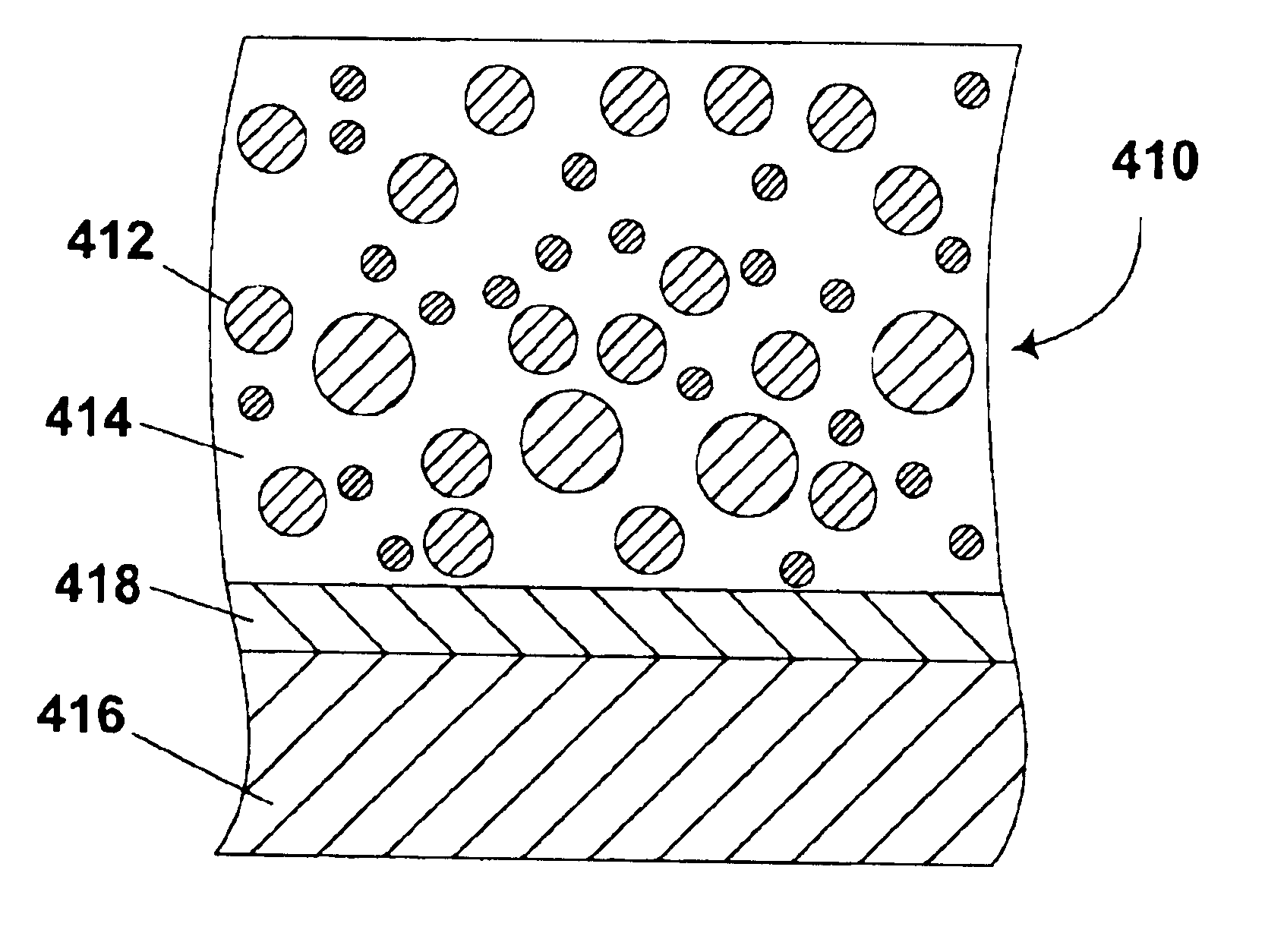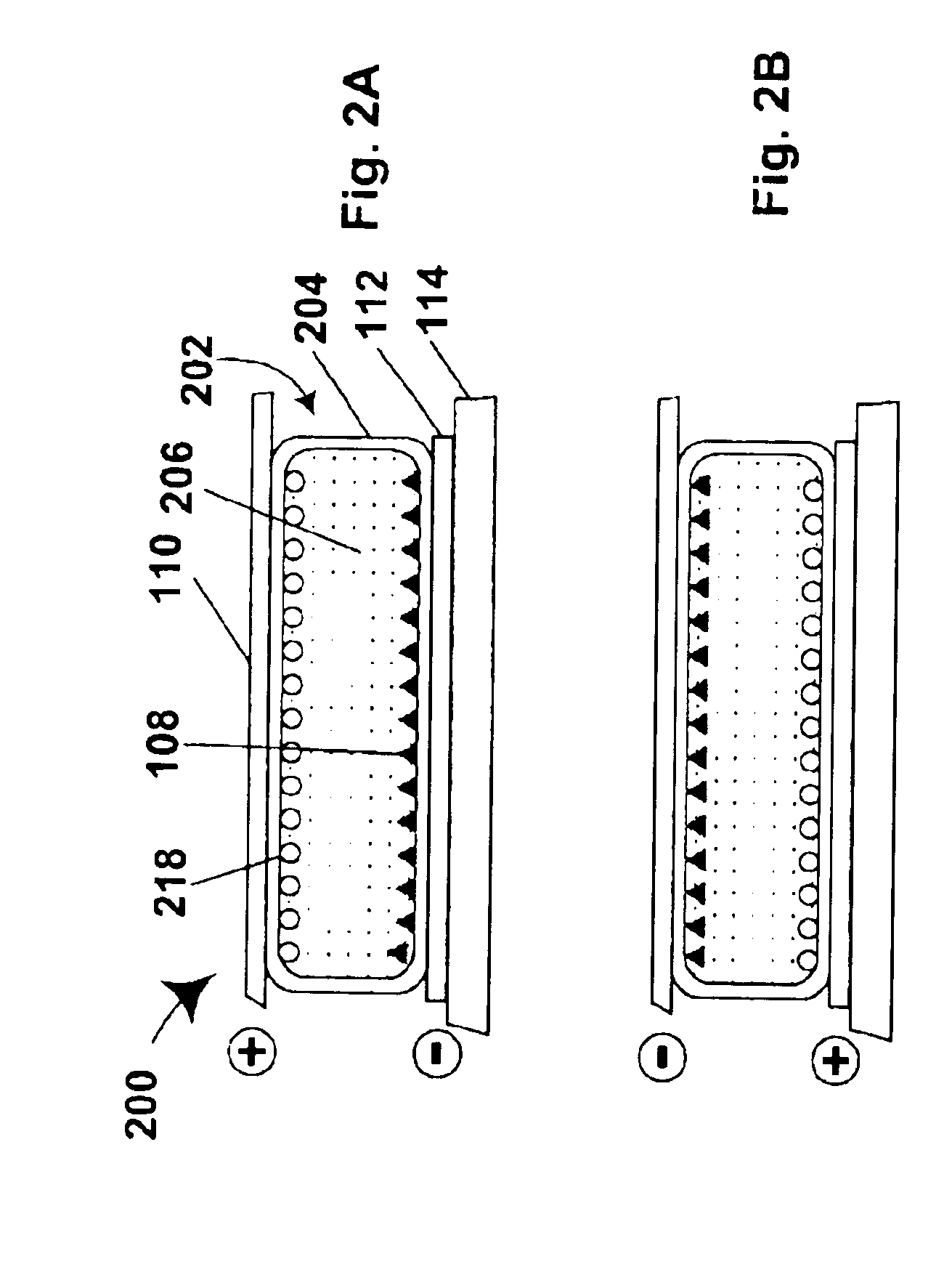Electrophoretic particles and processes for the production thereof
a technology processes, applied in the field of electrophoretic particles, can solve the problems of preventing their widespread use, inadequate the service life of encapsulated electrophoretic displays, both single and dual particle types, and achieves the effects of easy dispersibility, maximum dispersibility, and easy stabilization
- Summary
- Abstract
- Description
- Claims
- Application Information
AI Technical Summary
Benefits of technology
Problems solved by technology
Method used
Image
Examples
example 2
This Example illustrates reaction of the silica-coated pigment prepared in Example 1 with a bifunctional reagent in the first stage of an RGP process of the present invention.
To a mixture of ethanol (500 ml) and water (50 mL), concentrated ammonium hydroxide was added until the pH reached 9.0-9.5, N-[3-(trimethoxysilyl)proplyl]-N'-(4-vinylbenzyl)ethylene diamine hydrochloride (40 g of a 40 weight percent solution in methanol) was added, and the resultant solution was stirred rapidly for 4 minutes.
The silica-coated ferric oxide (25 g) prepared in Example 1 was then added, and the mixture stirred rapidly for 7 minutes. The resultant suspension was poured into plastic bottles and centrifuged at 3500 rpm for 30 minutes. The supernatant liquor was decanted, and the silanized pigment re-dispersed in ethanol and centrifuged at 3500 rpm for 30 minutes, and the liquid decanted. The washing was repeated, and the pigment finally dried in air for 18 hours, then under vacuum at 70.degree. C. for...
example 3
This Example illustrates conversion of the silanized pigment produced in Example 2 to a polymer-coated pigment useful in an electrophoretic display.
The silanized pigment produced in Example 2 (50 g) was placed in a round-bottomed flask with toluene (50 g) and 2-ethylhexyl methacrylate monomer (50 g).
The resultant mixture was stirred rapidly under a nitrogen atmosphere (argon may alternatively be used) for 20 minutes, then slowly heated to 50.degree. C. and AIBN (0.5 g in 10 ml of toluene) added quickly. The suspension was then heated to 65.degree. C. and stirred at this temperature under nitrogen for a further 18 hours. The resultant viscous suspension was poured into plastic bottles, the flask being washed out with ethyl acetate to remove residual product and the ethyl acetate solution added to the bottles. The bottles were centrifuged at 3500 rpm for 30 minutes. The supernatant liquor was decanted, and the polymer-coated pigment re-dispersed in ethyl acetate and centrifuged at 350...
example 4
This Example illustrates an ATRP process of the present invention in which an ATRP initiating group is bonded to a pigment using a polymeric bifunctional reagent.
A terpolymer was prepared by adding styrene (80 g), p-chloromethylstyrene (15 g), trimethoxysilyl methacrylate (23 g), AIBN (6.3 g) and toluene (94 g) to a round-bottomed flask, which was then purged with nitrogen for approximately 45 minutes. The flask was heated to 60.degree. C. and maintained at this temperature for about 18 hours. Thermogravimetric analysis indicated that the resultant solution contained about 40 percent by weight polymer.
An aliquot (12 g, equal to approximately 4.8 g of terpolymer) as added to THF (100 ml), and then silica-coated titania (20 g of du Pont R960) was added to the solution, and the mixture was sonicated for 5 minutes, and then stirred vigorously. Hexane (500 ml) was added, and the stirring was stopped, whereupon the titania immediately settled out. The mixture was then centrifuged at 5000 ...
PUM
| Property | Measurement | Unit |
|---|---|---|
| temperature | aaaaa | aaaaa |
| diameters | aaaaa | aaaaa |
| diameters | aaaaa | aaaaa |
Abstract
Description
Claims
Application Information
 Login to View More
Login to View More - R&D
- Intellectual Property
- Life Sciences
- Materials
- Tech Scout
- Unparalleled Data Quality
- Higher Quality Content
- 60% Fewer Hallucinations
Browse by: Latest US Patents, China's latest patents, Technical Efficacy Thesaurus, Application Domain, Technology Topic, Popular Technical Reports.
© 2025 PatSnap. All rights reserved.Legal|Privacy policy|Modern Slavery Act Transparency Statement|Sitemap|About US| Contact US: help@patsnap.com



